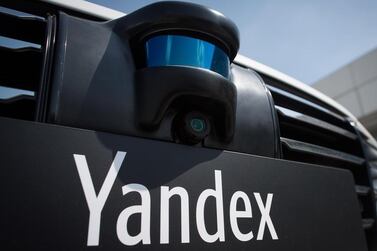Uber is committing to become a fully zero-emission platform by 2040, with 100 per cent of rides taking place in electric vehicles, the company said.
The California-based firm is planning a phased transition, with a goal to use only EVs in the US, Canada and Europe by 2030 and to replicate this worldwide over the following decade.
“Everything changed in 2020. Months of rolling shutdowns pushed cities and businesses into survival mode … the pandemic has caused many cities to rethink,” Dara Khosrowshahi, the company’s chief executive, said.
Instead of going back to business as usual, Uber is taking this as an opportunity to reduce its environmental impact, Mr Khosrowshahi, said.
“It’s our responsibility as the largest mobility platform in the world to more aggressively tackle the challenge of climate change,” he added.
The company is dedicating $800 million (Dh2.9 billion) in resources to help hundreds of thousands of drivers in the US, Canada, and Europe transition to electric vehicles by 2025.
Uber’s move to transition to EVs comes a few months after its rival Lyft committed to an all-electric fleet by 2030.
The company also began a new Uber Green initiative on Tuesday where, for an extra $1, customers in 15 US and Canadian cities can request a ride in an EV or hybrid vehicle.
Such trips typically generate 44 per cent less carbon emissions than petrol-powered cars. By the end of the year, Uber Green will be available in more than 65 cities globally, the company said.
Uber is also investing in a “multimodal network” to promote sustainable alternatives to people using their own cars. These include bikes and scooters – two of the best ways to lower emissions for shorter trips – and an expansion of its Uber Pool shared rides services, which is available in more than 50 cities.
This feature prompts users to join a pool trip headed in the same direction as their destination.
“Transportation is the fastest growing source of climate-disrupting pollution and ride-hailing companies can play a vital role in changing course,” Andrew Steer, president and chief executive of the Washington-based World Resources Institute, said. The non-profit organisation is working with Uber on its climate initiatives.
“As Uber increases its focus on low-carbon transportation, it can expand public transit integration and micro-mobility options … [it] can help push the transportation sector forward by promoting the equitable, sustainable and safe movement of people,” Mr Steer said.








